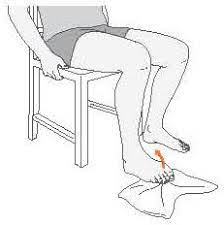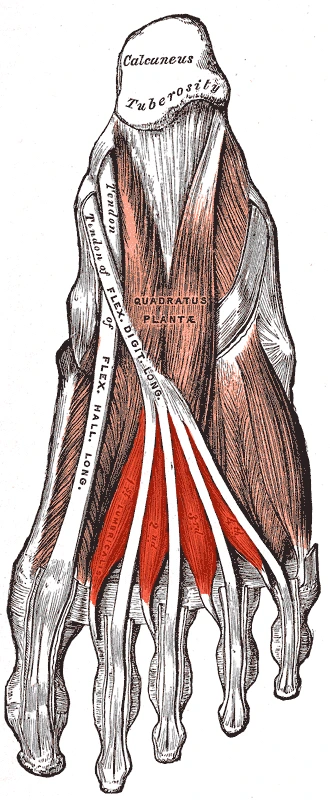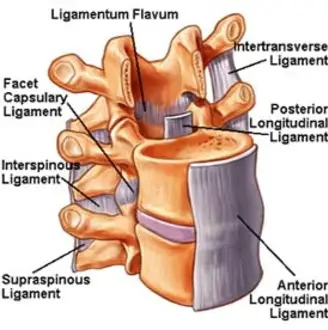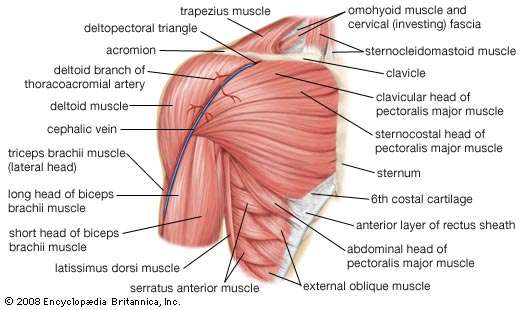Lumbricals muscle of the foot Anatomy, Origin, Insertion, Function, Exercise
Table of Contents
Introduction
- Lumbricals are the 4 small muscles found in the sole of the foot. Following the classification of plantar foot muscles into 4 layers (superficial to deep), the lumbricals & quadratus Plantae comprise the 2nd layer. However, when the plantar muscles are by groups (medial to lateral), lumbricals are described as the muscles of the central plantar compartment.
- Lumbrical muscles flex & adduct the lateral four toes at the metatarsophalangeal joints & extend them at the interphalangeal joints. These Actions give to the biomechanical balance of the foot during walking.
Origin & insertion
- The lumbricals muscle arises from the tendons of the flexor digitorum longus muscle, which is why they are sometimes referred to as the accessory muscles of the flexor digitorum longus. From medially to laterally, they are numbered I-IV.
- The 1st lumbrical muscle arises from the medial side of the 1st flexor digitorum longus tendon, i.e. the one intended for the 2nd toe. The rest of the lumbricals muscle has 2 origin points, arising from the facing surfaces of two adjacent tendons of the flexor digitorum longus, respectively.
- From the point of origin, each lumbrical muscle crosses anteriorly, plantar to the deep transverse metatarsal ligaments. The muscle bellies then turn obliquely upwards to attach to the base of the proximal phalanges of the 2nd to 5th digits & their extensor expansions.
Structure
- The lumbricals muscle arises from the tendons of the flexor digitorum longus muscle, as far back as their angles of division, each springing from 2 tendons, except the 1st. The 1st lumbrical is unipennate, while the 2nd, 4th, and 4th are bipennate.
- The muscles end in tendons, which pass forward on the medial sides of the 4 lesser toes, & are inserted into the expansions of the tendons of the extensor digitorum longus muscle on the dorsal part of the proximal phalanges. All 4 lumbricals insert into extensor hoods of the phalanges, thus creating extension at the inter-phalangeal (PIP & DIP) joints. However, as the tendons also pass inferior to the metatarsal phalangeal (MTP) joints flexion at this joint.
Relations
- Upon arising from the tendons of the flexor digitorum longus muscle, the lumbricals muscle pass from the flexor to the extensor compartment of the foot. After providing the origin sites for them, the flexor digitorum longus tendons cross the inferomedial & lateral surfaces of the lumbricals prior to passing through the flexor sheaths of the 2nd to 5th toe.
- The inserting fibers of each lumbrical muscle are in relation to the plantar surfaces of deep transverse metatarsal ligaments, which are the wide fibrous bands that connect the plantar ligaments of adjoining metatarsophalangeal joints.
Function
- By bringing the medial base of the proximal phalanx, the lumbrical muscles flex & adduct the toes at the metatarsophalangeal (MTP) joints. Oppositely, by pulling the extensor expansions of the phalanges, the lumbricals enlarge the toes at the interphalangeal (IP) joints.
- These functions of the lumbrical muscles give a balancing function to the foot. Flexion & adduction at the MTP joints oppose the extension of the long & short extensor of the toes & prevent hyperextension of the toes during the propulsive phase of gait. The extension at IP joints stops clawing during gait as it opposes the flexion produced by the long & short flexors of the toes.
Nerve supply
- Lumbrical muscles are innervated by the 2 terminal branches of the tibial nerve
- .The 1st lumbrical muscle is supplied by the medial plantar nerve (S1, S2).
- The lateral 3 lumbricals are innervated by the lateral plantar nerve (S2, S3).
Variation
- Absence of 1 or more; doubling of the 3rd or 4th even the 5th. Insertion partly or wholly into the 1st phalanges.
Blood supply
- Lumbrical muscles are innervated by branches of an anastomotic network between the lateral plantar & dorsalis pedis arteries known as the plantar arch. The convexity of the plantar arch gives off the lateral plantar artery & four plantar metatarsal arteries that supply the lumbrical muscles.
Clinical importance
Tarsul Tunnel Syndrome
- Tarsal tunnel syndrome is a condition in which the posterior tibial nerve is compressed & Damaged in the tarsal tunnel, which is a part of the ankle joint, narrow space is covered by a thick ligament (the flexor retinaculum) that protects & maintains the structures contained within the tunnel—Nerves, arteries, veins & tendons.
- This can feel like: sharp, shooting pains, pins & needles, an electric shock, a burning sensation
- Metatarsalgia is a condition in which the ball of the foot becomes painful & inflamed. You should develop it if you participate in activities that involve running & jumping. There are other causes as well, including foot deformities & shoes that are too tight or too loose.
- Metatarsalgia is pain that affects the ball of the foot. The metatarsals are bones that attach the toes to the ankles.
- Symptoms are Joint subluxations,
- Flexor plate tears
- Increased pain during the mid-stance & propulsion phases of walking as body weight is shifted forward onto the forefoot.
Stretching exercise of lumbrical muscle
Towel toe pull
- Sit on the ground with your foot extended out in front. Hold the ends of the towel & loop the middle over the toes. maintain the knee straight with a flexed foot (toes pointed upward). Pull the ends of the towel, which will drag the toes toward the body. Hold for 20 seconds. Repeat on the opposite side. Complete Towel toe pulls stretch once a day, every other day.
Strengthening exercise of lumbrical muscle

Towel crunches
- The foot has tiny intrinsic muscles that stabilize the toes called the interossei & lumbricals. A great way to strengthen them is to put the foot on a towel & crunch your toes. Do this ten times, then take a 30-second break & repeat to complete 3 sets of ten. When you get good at this, replace the towel with a pen or marker & grab it with your toes.
Heel walking

- Heel striking is what we are avoiding, but heel walking is a great way to strengthen the anterior lower leg muscles (muscles in your shin). Roll back on the heels and walk forward balancing yourself on your heels for about 30 seconds, then take a 30-second break & repeat two more times.
Deep squats on the forefoot
- Roll up onto the forefoot then squat down into an almost sitting position, trying to keep the balance and avoid shifting back onto your heels. Hold this pose for 30 seconds then stand up for 10 seconds & repeat 5 more times. When you get good at this, try holding a weighted bar at your shoulder level & then squatting.
Inner foot strengthening with a resistance band
- This exercise is for the medial muscles; the posterior tibial muscle & abductor hallucis. Tie the resistance band on a chair leg then use the medial muscles to pull the band toward the center of the body. Another option is to hook the band around the foot, then use the other foot to stabilize it. Pull your foot toward the midline of the body. Hold for 10 seconds and then relax for 10 seconds. Repeat 10 times. (An alternative is to balance on the inside of the foot and walk for 30 seconds, following the pattern of heel walking.)
Outer foot strengthening with a resistance band
- This targets the lateral muscles; the peroneals. Tie the resistance band on a chair leg then use the lateral muscles to pull the band toward the outside of the body. Another option is to hook the band around the foot, then use the other foot to stabilize it. Then move the foot towards the outside of the body. Hold for 10 seconds then relax for 10 seconds and Repeat 10 times. (An alternative is to balance on the outside of the foot & walk for 30 seconds, following the pattern of heel walking.)
Proprioceptive/Balance Training
- Balance on 1 foot with another leg bent. Hold for 30 seconds and Repeat 5 times. When you get good, then roll up onto the forefoot. If you are a pro, then put a 5-pound weight in the opposite hand & touch your toes while balancing on your forefoot. (An alternative progression is to go from 1 leg on the forefoot on a level floor, to a foam mat then a Bosu ball/wobble board.)
- These 6 simple exercises can help you strengthen the lumbrical muscles of the feet and help you transition to a minimalist running style. Remember to also stretch the quads, hip flexors, hamstrings, and calf (gastrocnemius and soleus) as well as the plantar fascia after these exercises to warm down.
- Small incremental increases in stress make us stronger.
Short foot exercise
- By far the most popular lumbrical muscle exercise for feet, the short foot movement is the best place to initiate. Sitting down, have both feet flat on the ground & shoulder-width apart. Initiate the motion by lifting all of the toes up while keeping contact between the ball of your foot & the floor. This effectively raises the arch of the foot, which you are going to attempt to keep up.
- Resume by lowering the toes towards the floor while also engaging the muscles of the arch. This might help you keep a doming in your foot and pull the big toe towards the heel. These functions together might result in a shorter-looking foot, hence the name of the exercise. Keep in mind that the toes might be laying flat & straight ahead, in order to avoid toe curls. Since it’s an isometric hold, you’ll want to keep this position for about 30 seconds.
- The difficulty can also be increased for an added challenge.1st, try this exercise standing instead of sitting in order to improve the weight placed on the arch. Then, you can resume by standing on one foot as you raise the other, & hold for 30 seconds. Various types of yoga poses are also done this way.
Big toe lift
- While it’s a simple-sounding exercise, separating the motion of the big toe is a good way to engage the lumbrical muscles over the extrinsic ones. You’ll want to initiate by either standing or sitting, with feet together. All you need to do is raise the big toe while the other toes stay planted on the floor.
- The key to this exercise is to prevent the foot from rolling out to the sides, which can give the impression that you are going higher than you actually are. You might also be avoiding any curling of the little toes. The more you practice this, the greater range of motion you will be able to achieve.
Toe splay
- Once again, either sitting/standing, stand with the feet about shoulder-width apart. start the exercise by simply spreading out the toes as far out as possible, without curling or performing a toe extension. This exercise is to put the most prominence on the big toe.
- Activation of the big toe has been shown to be an effective way to activate the arch, & so you should feel the arch muscles contract. Once they are splayed, hold the position for about 8-10 seconds. For this movement, you can perform reps & sets, or just practice throughout the day whenever you have got some time.
Big toe press
- The following exercise will build off of this one, but it does not mean the big toe press is not great in its own right. Sticking to the theme of simplicity, all you’ll really be doing is pressing the large toe into the floor while lifting the other toes.
- You can do this either sitting or standing, withstanding being slightly more difficult. Also, try to maintain a shoulder-width distance between your feet. Don’t curl or straighten the toes as you do this, and try to feel the tension between the big toe & the other 4 toes. Once you have raised the little toes, hold that position for somewhere around 8 seconds.
Big toe /little toe lifts
- Also known as the piano toe exercise, this motion relies primarily on separating the movement of the big toe from the rest of the toes. Same like to the exercises we looked at above, the separate motion of the big toe is thought to increase the engagement of the lumbrical muscles of the foot.
- For this exercise, you can sit or stand. Begin by lifting the little toes off of the floor, maintaining contact between your big toe & the floor. Continue by then lifting the big toe off of the ground while placing your little toes down to touch the ground. This is basically the entirety of the motion, switching from big toe down to little toes up, & vice versa. The key is to get a good handle on this exercise so you can do it fastly.
- For an added challenge, keep the short foot positioning that we looked at above. keep the high arch in the foot while trying to control the finer motor motion can prove to be pretty challenging. But if you have mastered this, try taking your little toes off the ground, maintaining an arch, & standing on one leg. Once you can do this, there’s little doubt that you have got a strong pair of feet.
Getting the right kicks
- Whether or not you opt for minimalist running, you are going to require shoes at one point or another. This is another part that can potentially make the foot healthy, especially in terms of keeping the lumbrical muscles as healthy as possible.
- There are plenty of tips for making sure that the shoes fit, but one of the key factors is looking at the toe box. Located at the front of the shoe, this part of the shoe needs enough space in either direction to comfortably hold all of your toes & the width of the foot.
- A good way of checking whether a shoe is sized well is by removing the insert of the shoe & placing your foot over the top of it. Your foot might almost perfectly align with the edges of the inserts, without any excessive overhang or too much space. But there are other most things to remember as well.
- Keep in mind that sizes do not matter all that much, since manufacturers differ quite a bit. There should be about 1/2 an inch left over in the front of the shoe, & about 1/8 of an inch left over in the back.
- This will ensure that the shoes are not too tight, while also preventing the foot from sliding around. It’s also a good idea to walk around with both of them on to get a good feel, wearing socks that you’d normally wear from day to day. A shoe might be immediately comfortable as soon as you put it on.
- You might also be trying to fit your shoes to the larger foot. That’s why sometimes our shoes don’t fit as well on one foot as on the other, but when accounting for this, it’s best to get a size that’s more comfortable on the larger foot.
- Lastly, trying on shoes at the end of the day is recommended over trying them on 1st thing in the morning. Our feet tend to slightly swell over the course of the day, especially if we have been walking around a lot. Measuring the shoe to the swelled-up feet will help to maintain enough wiggle room throughout the entire day.
FAQ
The lumbricals of the foot flex the metatarsophalangeal joints & extend the interphalangeal joints.
The lumbrical muscles of the foot are 4 muscles that originate from the tendons of the flexor digitorum longus & pass dorsally to insert into the free medial margins of the extensor hoods of the 4 lateral toes.
Towel crunches – The foot has tiny intrinsic muscles that stabilize the toes known as the interossei & lumbricals. A great way to strengthen them is to put the foot on a towel and crunch your toes. Do this ten times, then take a 30-second break & repeat to complete 3 sets of ten.
Towel toe pulls strech: Pull the ends of the towel, which will pull the toes toward the body. Hold it for 20 seconds. Repeat on the other side. Complete towel toe pull stretch 1 a day, every other day
The dorsal interossei muscles are a group of 4 bicephalic feather-shaped muscles that fill the space between the metatarsal bones of the foot. Their function is located in spreading the toes apart and in flexing the metatarsophalangeal joints of the 2nd to the 5th toe.
The most general cause of foot drop is compression of a nerve in the leg that controls the muscles involved in lifting the foot (peroneal nerve). This nerve can also be injured during hip & knee replacement surgery, which may cause foot drop.





